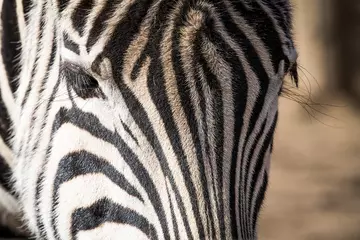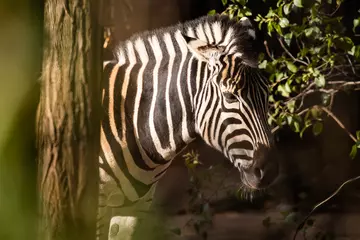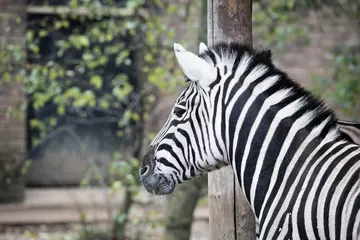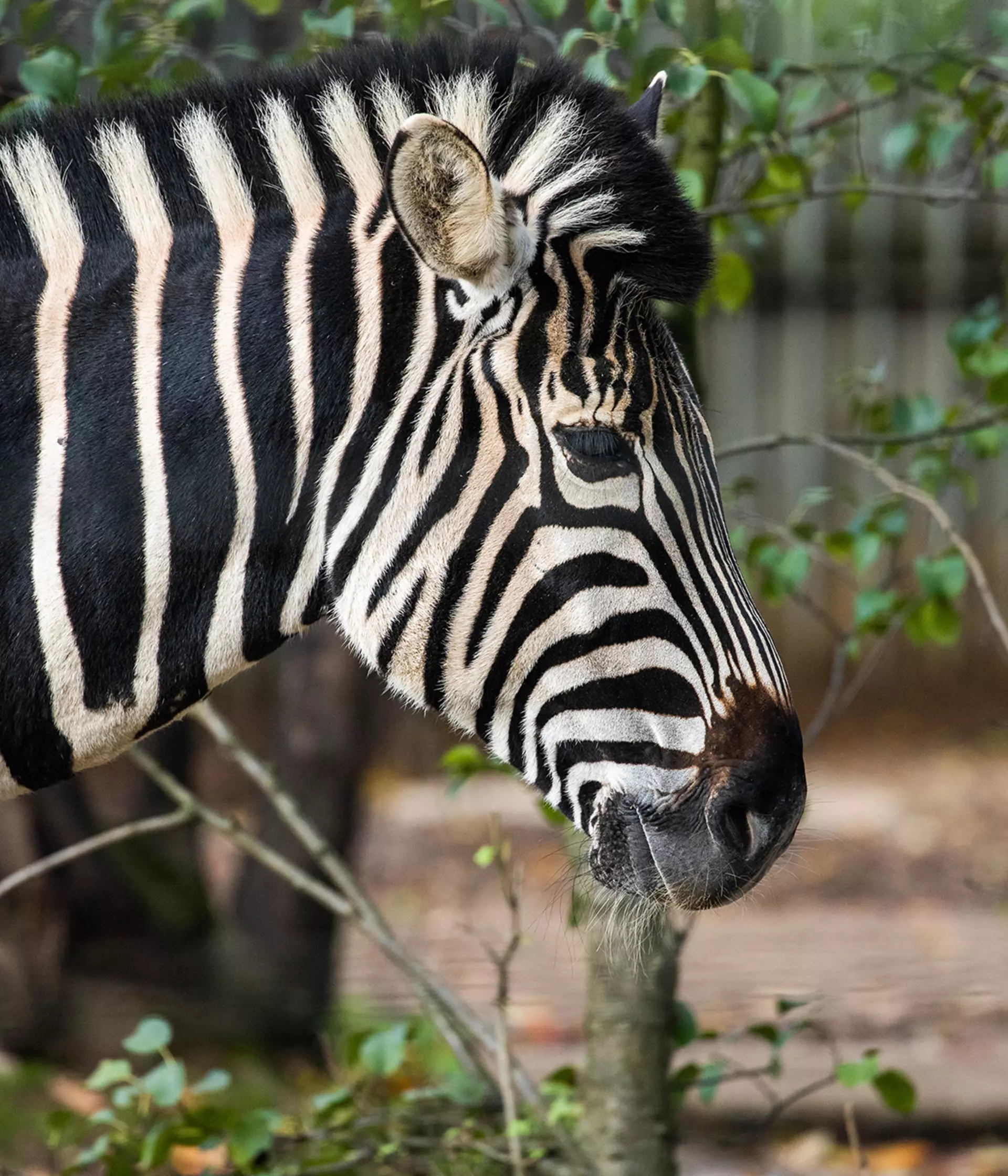
There's more to zebras than their stripy coats! From sleeping standing up to unusual eating habits, Gemma Metcalf, keeper at London Zoo, gives us the lowdown on these iconic animals.
1. There are three species of zebra
Found across the shrublands, grasslands and savannahs of Africa, zebras are closely related to horses and donkeys. There are three recognised zebra species: Grevy's zebras can be identified by their thinner stripes; mountain zebras have vertical stripes on their bodies with horizontal stripes on their legs; while Chapman's zebras (or plains zebras) have faint brown stripes between their black stripes.
At London Zoo, you can see our plains zebras. Over at Whipsnade Zoo, make sure to visit our herd of Grevy's zebras, part of the European breeding programme for Endangered Species.

2. Some zebras have spots!
Zebras don't come into the world black and white; foals are born with brown and white stripes, which darken as they grow. Some zebras have spots as well as stripes, as can be seen in our herd at London Zoo.
3. How did the zebra get its stripes?
Just as every human has a unique set of fingerprints, every zebra has a unique stripe pattern. We are still not entirely sure how the zebra got its stripes, but there are many theories. One is that they may provide a dazzling form of camouflage against predators such a lions. When zebras are moving in a herd, their stripe patterns could make it hard to attackers to pick out individual animals. Their distinctive coats may also help zebras to recognise each other. Another theory is their markings prevent attacks from disease-carrying horseflies, which avoid striped surfaces. Scientists have also suggested that their stripes help to regulate their body temperature, and could even act as a natural sunscreen.
4. A group of zebras is called a dazzle
Did you know that a herd of zebras can alternatively be known as a dazzle? In the wild, zebras live in sociable groups. Plains zebras and mountain zebras tend to live in family groups made up of a dominant male, several females and their young, while Grevy's zebras often form individual units of mares and foals. Their sociable nature can be seen at our Zoos - the zebras are always together and follow each other everywhere.

5. Zebras are seriously chatty animals
Whinnies, barks, snorts and sniffs are just some of the noises they use to communicate. The group at London Zoo is certainly vocal. Zebras communicate non-verbally too, using their ears to indicate their mood. If their friend is stealing their hay and they're not happy, they put their ears flat back and bare their teeth. If their ears are pricked and forwards, they're paying attention to something going on.
6. Zebras spend up to 60% of their day eating
Zebras are hindgut fermenters, which means their digestive systems are adapted to tackle highly fibrous plants, including grass, twigs and bark. Our zebras should be eating for about 22 hours a day to keep their digestive systems satisfied. They have hay feeders in their paddock so they can access a constant trickle of food.
7. Zebras go to great lengths to find food
Each year, hundreds of thousands of zebras migrate across southern and eastern African, in search of water and grazing opportunities. One of the most famous journeys is the Serengeti migration, which sees around 750,000 zebras travel from the Serengeti in northern Tanzania to the Masai Mara Reserve in Kenya. But, further south, an even longer migration takes place. During the dry months, thousands of plains zebra embark on a 300-mile trip from the Chobe River (on the border of Namibia and Botswana) to Botswana's Nxai Pan National Park - the longest mammal migration on the continent!

8. Zebras can snooze standing up
Like other hoofed animals, such as horses and giraffes, zebras have locking joints. This means they can subconsciously lock their knees into position and doze without worrying about falling over. This adaptation has many benefits: it ensures the zebras are alert to predators and can escape quickly if threatened. However, to achieve deep sleep, zebras do need to lie down.
9. Zebras are fast runners!
Masters of endurance, zebras are also fast on their feet. They are capable of reaching speeds up to 65kmph (nearly double the pace of Olympian Usain Bolt). Zebras draw on their speed, agility and stamina reserves to outrun predators. One trick they use to evade threats is to run in a zigzag direction to confuse their attackers.
10. Zebras can be fierce fighters
They may seem docile, but male zebras will battle with each other to secure a mate, using bites and powerful kicks to defeat their rivals. When threatened by predators, such as lions, zebra groups will often form a defensive semicircle in front of the attacker and fight, if necessary.
Love zebras? Browse our dazzling collection of zebra gifts in our online shop and support ZSL's vital science and conservation work.
